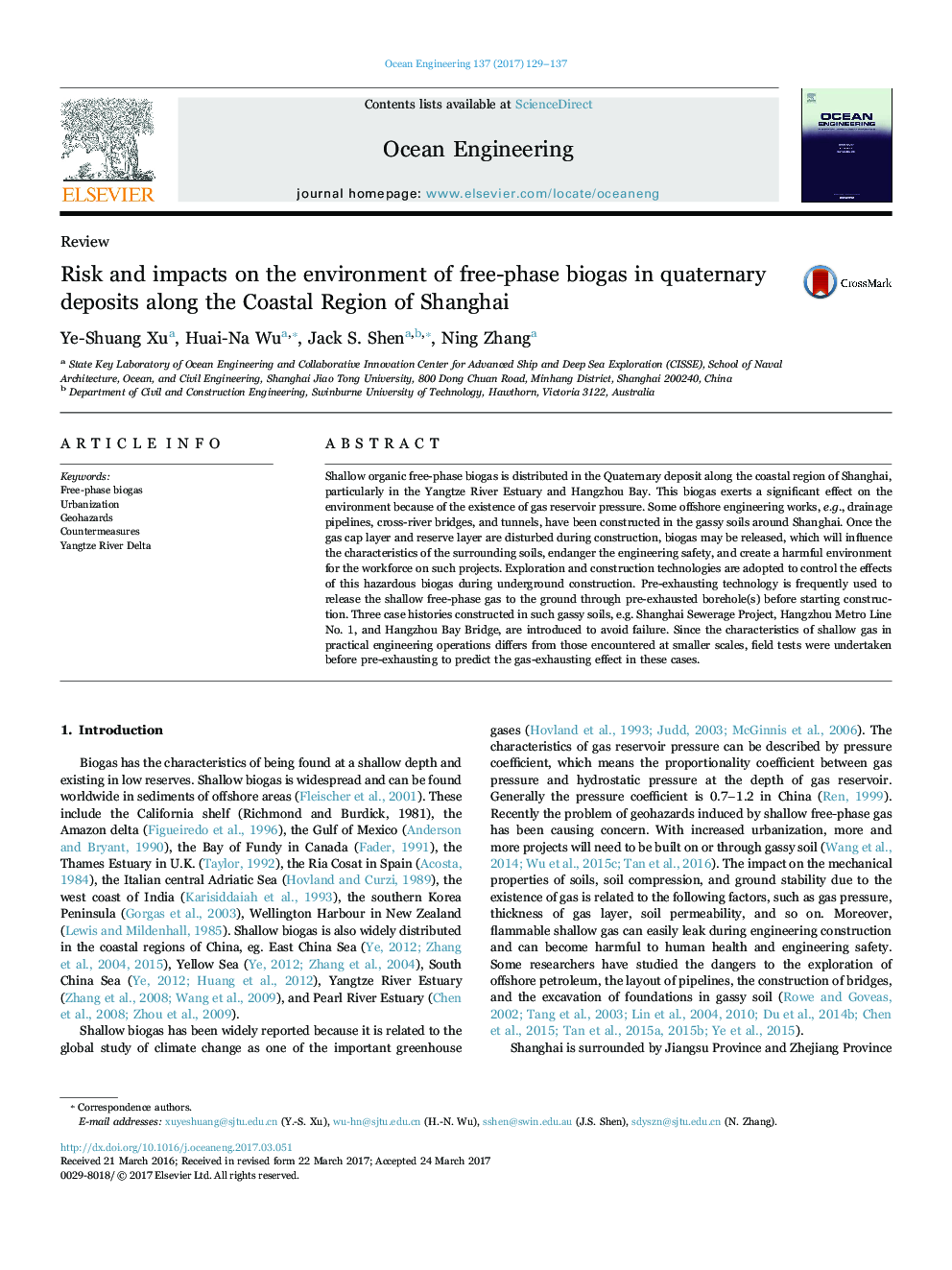| Article ID | Journal | Published Year | Pages | File Type |
|---|---|---|---|---|
| 5474229 | Ocean Engineering | 2017 | 9 Pages |
Abstract
Shallow organic free-phase biogas is distributed in the Quaternary deposit along the coastal region of Shanghai, particularly in the Yangtze River Estuary and Hangzhou Bay. This biogas exerts a significant effect on the environment because of the existence of gas reservoir pressure. Some offshore engineering works, e.g., drainage pipelines, cross-river bridges, and tunnels, have been constructed in the gassy soils around Shanghai. Once the gas cap layer and reserve layer are disturbed during construction, biogas may be released, which will influence the characteristics of the surrounding soils, endanger the engineering safety, and create a harmful environment for the workforce on such projects. Exploration and construction technologies are adopted to control the effects of this hazardous biogas during underground construction. Pre-exhausting technology is frequently used to release the shallow free-phase gas to the ground through pre-exhausted borehole(s) before starting construction. Three case histories constructed in such gassy soils, e.g. Shanghai Sewerage Project, Hangzhou Metro Line No. 1, and Hangzhou Bay Bridge, are introduced to avoid failure. Since the characteristics of shallow gas in practical engineering operations differs from those encountered at smaller scales, field tests were undertaken before pre-exhausting to predict the gas-exhausting effect in these cases.
Related Topics
Physical Sciences and Engineering
Engineering
Ocean Engineering
Authors
Ye-Shuang Xu, Huai-Na Wu, Jack S. Shen, Ning Zhang,
